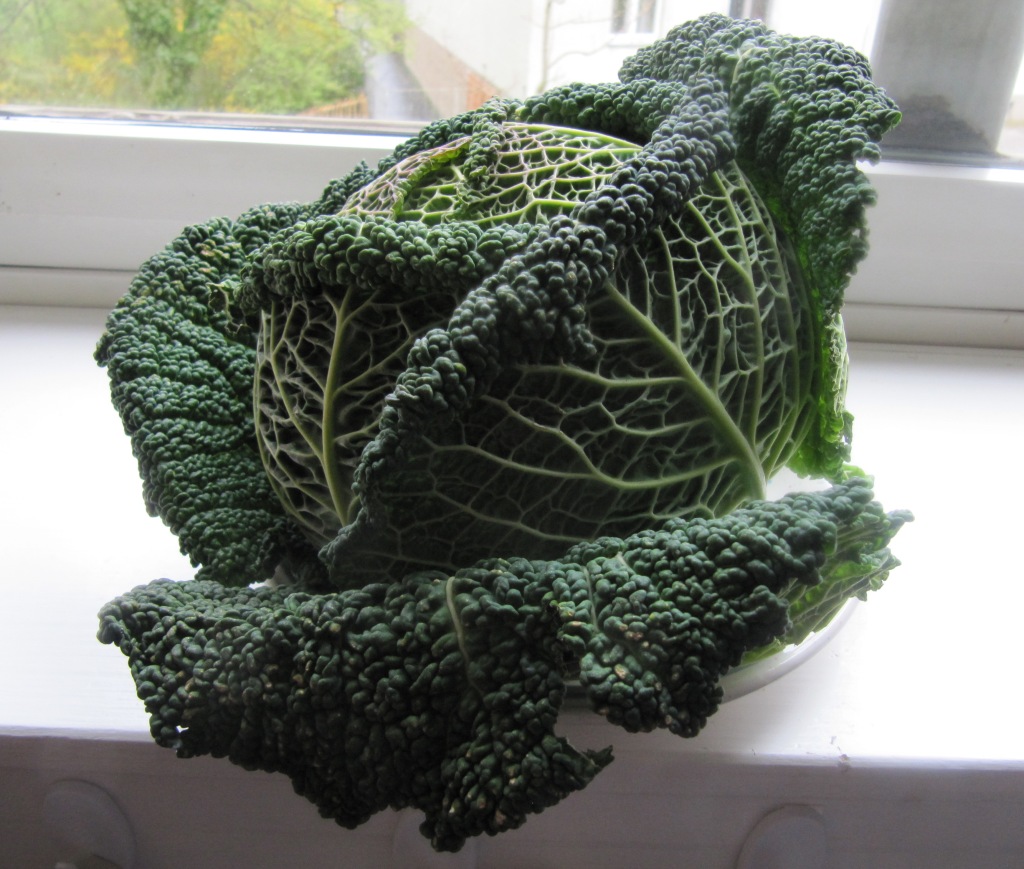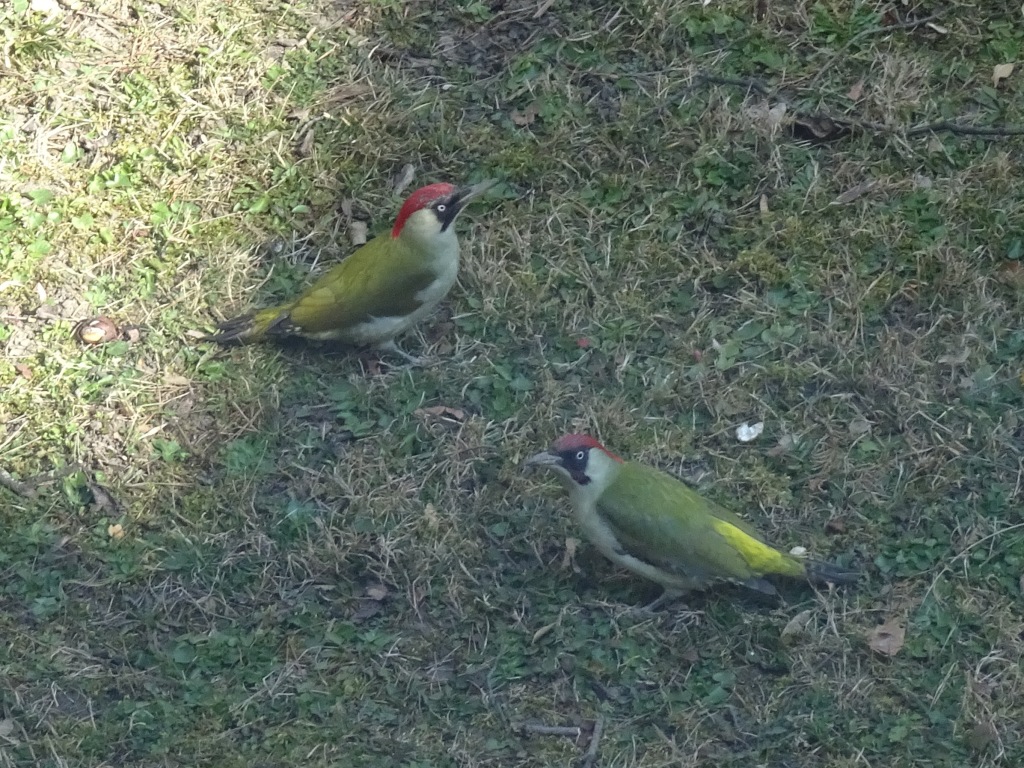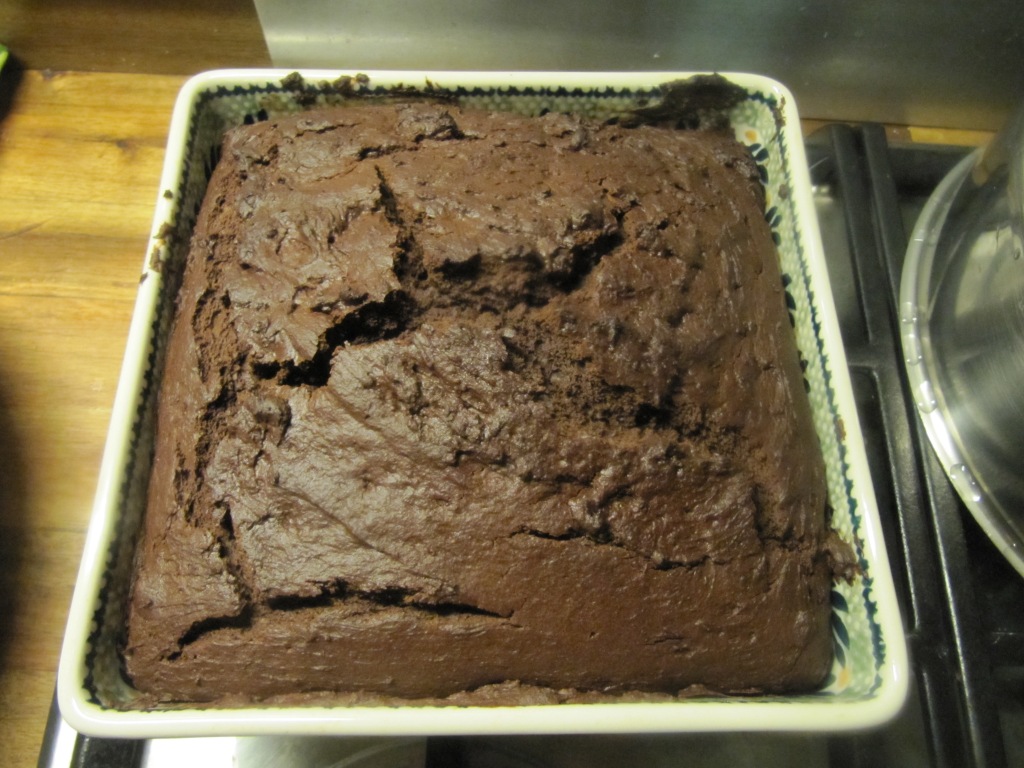Veritable Viridity

KA and I often drive to a supermarket in the next district so it is possible to keep a distance from other customers while grocery shopping. Unfortunately, it has less vegetable variety than one of the (cramped and swarming) supermarkets within walking distance. (Don’t get me started on how I suffer from not being able to find Swiss chard, one of the hallmarks of culinary civilization). While white cabbage (Kraut) is quite common, Savoy cabbage is less so. The bowling ball Kraut that we bought a month ago has finally disappeared. Half of it went into soup and the other half was mixed with leeks, onion, cinnamon, pine nuts, and parsley to make a filling for a vegetable strudel based on this recipe. White cabbage can be tasty but heavy, and now that spring has arrived, we are ready to leave Kraut behind us like the winter. We had even agreed on this strategy while I drew up the shopping list, determining it was time to move on to other vegetables. So when I was dazzled by the beauty of the dark green crinkled leaves of the Savoy cabbage, I pointed to it and asked KA if he was sure there should no more Kraut, he gave me a look. “Das ist Kohl.” Oh. (Here I thought it was Wirsing in standard German, but when in Vienna, do as the Viennese do). Kraut is out; Kohl, ja wohl! Into the cart it went.

This spring, I am playing a game with myself. Spring is all about the landscape erupting into green. Every evening since the equinox, I have written down what I ate that day that was green. For example, broccoli. The second recipe I tried from Rachel Roddy’s An A to Z of Pasta was Casarecce with Broccoli, in which the star vegetable is boiled for a few minutes and then sautéed in olive oil with garlic and chili. The broccoli becomes super soft and disintegrates into a clingy sauce. The pasta (here cornetti rigati instead of casarecce) is cooked in the water in which the broccoli was boiled, then added to the broccoli mixture – saving energy and water. Toasted breadcrumbs top it all off. This dish was a revelation – so creamy yet vegan. Roddy also presents the technique here.

While the broccoli pasta used storebought factory made pasta, I finally tried my hand at making handmade pasta, following the A to Z recipe for pici, which uses a mixture of soft wheat and hard wheat flours. You roll out the dough into a disk, cut the disk into thin strips, then roll the strips between your hands to round them. The sauce is not the one from the pici chapter but the tomato and basil sauce from the spaghetti chapter. Basil counts as green too.

While there have been a variety of dishes coming out of the kitchen, my knitting focus has narrowed to the sand linen pullover, whose back I hope to finish this evening. The pullover is knit in the round from the hem to the armholes, after which the back and front are each worked flat and then joined at the top. One challenge of knitting with linen is that gauge can change dramatically from round to flat knitting. Knitting flat usually results in a looser gauge than knitting in the round, which means a needle change is in order to avoid a line developing in your knitting. I went down from a US size 3 to size 2, and thankfully that did the trick. I thought I had started with the 2 but after a few rows I realized I had used a 3. Since I was too lazy to redo these rows, there is a bit of a stripe, but I am sure no one will notice except if the person in line behind me at the coffee shop or store is a textile nut and scrutinizes what I am wearing. It is exciting to see the pullover take shape.

Wishing you lots of green in the kitchen and outdoors!












